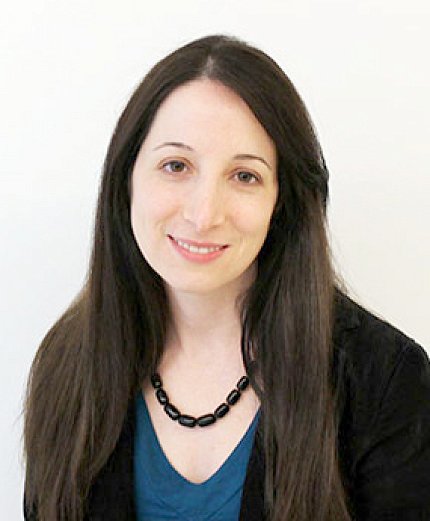NCI’s Cahoon Named Stadtman Tenure-Track Investigator

Dr. Elizabeth “Lisa” K. Cahoon was recently appointed an Earl Stadtman tenure-track investigator in the Radiation Epidemiology Branch of NCI’s Division of Cancer Epidemiology and Genetics. She studies cancer and precancer risks conferred by environmental sources of both ultraviolet and ionizing radiation exposure. She joined the branch as a postdoctoral fellow in 2010 and was promoted to research fellow in 2014.
Cahoon and colleagues are investigating how sensitivity to sunlight is influenced by external factors, such as use of photosensitizing medications. In a nationwide occupational cohort of U.S. radiological technologists, she found significantly increased risks of basal cell carcinoma for several photosensitizing agents, including prescription diuretics and menopausal hormone therapy. She has initiated two studies of photosensitizing medications (NSAIDS and estrogen-related factors) in relation to melanoma in the NIH-AARP cohort.
She is also evaluating the UV radiation dose-response relationship for skin cancer risks by wavelength, age at exposure and anatomic site.
“To best inform skin cancer prevention, we need a clearer understanding regarding the influence of timing of UV radiation exposure over the life course and relative exposure to different UV radiation wavelengths,” she said. “For example, if UVA is found to be strongly related to skin cancer risk, prevention implications could include reformulating sunscreens and engineering window glass to block UVA.”
In addition, Cahoon is examining whether ionizing radiation is related to several outcomes that have been little studied (e.g., precancers, histological subtypes) and whether radiation-related risks are modified by factors for which there are limited data (e.g., age at exposure).
Part of this effort involves the assessment of radiation-related risk for various cancers in the Lifespan Study of Japanese atomic bomb survivors.
Through a collaboration with the National Research Centre for Radiation Medicine in Ukraine, she is also leading a thyroid cancer case-control study nested in a cohort of emergency clean-up workers at the Chernobyl nuclear plant who were exposed to a wide range of external radiation doses.
Few studies have evaluated the relationship between iodine-131 exposure and thyroid nodules, which are potential precursors for thyroid cancer. Cahoon and colleagues are examining incidence of new thyroid nodules in Belarus and Ukraine and progression of prevalent nodules.
“This work potentially provides a rare window into multistage carcinogenesis,” she said. “These will be the first studies to evaluate whether nodule characteristics associated with increased risk of thyroid cancer, such as size and vascularization, are apparent at clinical diagnosis or whether these characteristics emerge and evolve over time.”
Named to honor Dr. Earl Stadtman, a noted biochemist at the National Heart, Lung, and Blood Institute, the Stadtman program is a trans-NIH recruitment initiative designed to attract the most talented early-career scientists to NIH.
